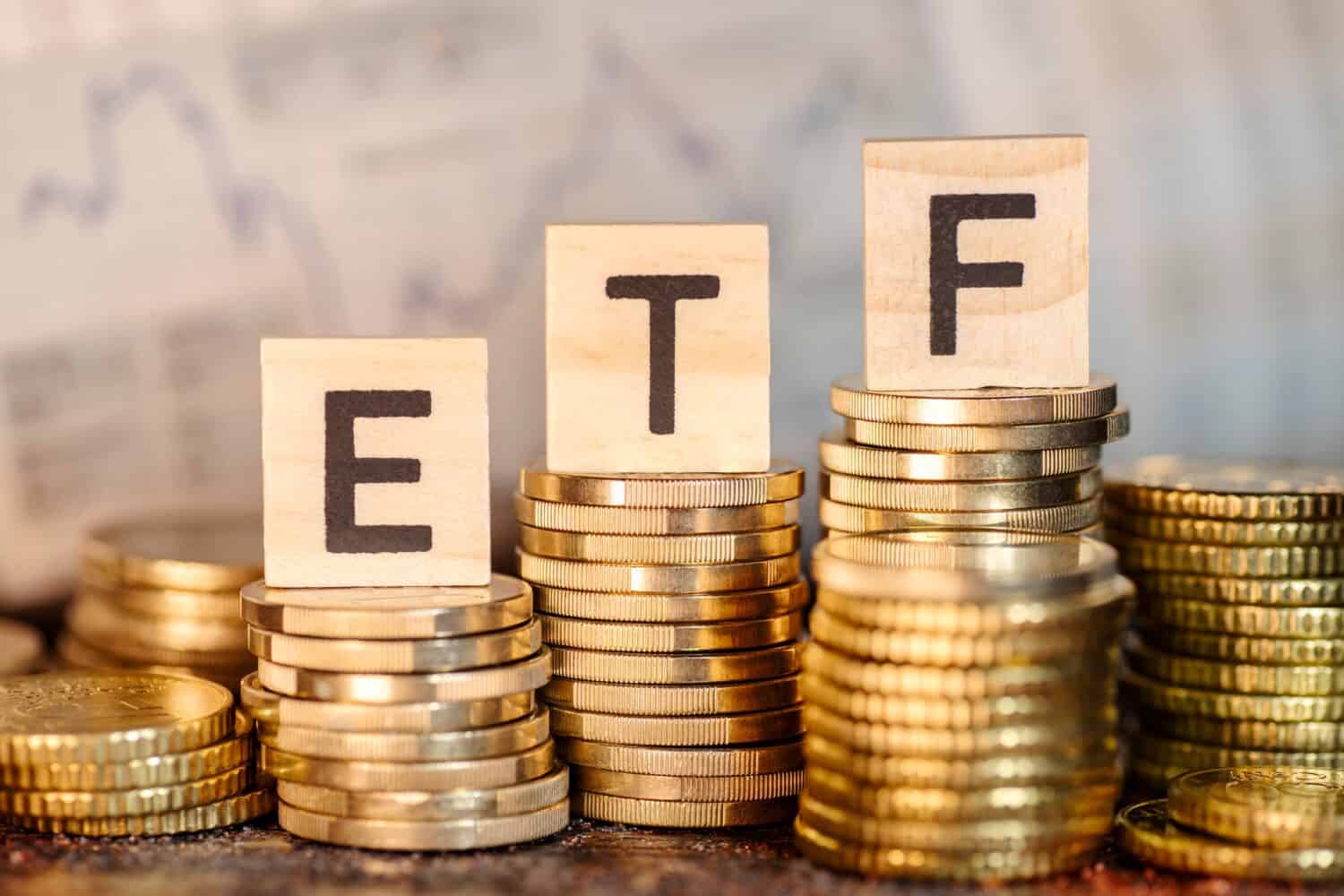

ETFs are a great way to add instant diversification to your portfolio. These investment vehicles pool investor funds to buy a chunk of stocks. Then, the ETF is treated like a regular stock, allowing you to buy a large swath of stocks with a single purchase.
Many ETFs track indexes. One of the most widely tracked indexes is the S&P 500, which tracks the performance of the top 500 large-cap companies listed in the United States. Investors seeking to gain exposure to the S&P 500 have two options: the Vanguard S&P 500 ETF (NYSE: VOO) and the Fidelity S&P 500 Index Fund (MUTF: FXAIX)
While both VOO and FXAIX offer nearly identical investment outcomes by tracking the S&P 500, the decision between them hinges on individual investor priorities. FXAIX excels at cost-efficiency and tax-friendliness, while VOO provides superior trading flexibility.
The type of investor you are will affect which one you should purchase. We’ll help you make the best decision for you below.
What is VOO?

VOO is an ETF that tracks the performance of the S&P 500 as closely as possible. The S&P 500 itself is a market-capitalization, weighted index that includes 500 leading publically traded companies. By owning shares in VOO, you’re investing in these 500 companies.
This makes VOO pretty diversified. This ETF achieves it’s objective by holding all the stocks of the S&P 500 index in proportion to their weighting. That means VOO is constantly being adjusted as companies enter or exit the S&P 500, as well as when weightings change.
VOO tends to mirror the S&P 500 index very closely, minus the ETF’s expense ratio (which we’ll discuss more below).
VOO is also pretty similar to VTI, and you may want to consider this third investment option, too.
What is FXAIX?

FXAIX is a mutual fund that also mirrors the performance of the S&P 500 Index. Similar to VOO, FXAIX allows you to invest in many established, large companies at once, providing instant diversification.
While VOO and FXAIX track the same index, the key difference is their structure. FXAIX is a mutual fund, which means it doesn’t trade throughout the day like an ETF. Instead, investors purchase shares of FXAIX at the end of each trading day.
On the other hand, VOO trades throughout the day.
Despite this structural difference, FXAIX has the same objective as VOO: to track the S&P 500 index as closely as possible. It also holds these 500 companies in proportion to their waiting in the index, and the fund will automatically adjust as the companies in the index change and shift.
Therefore, FXAIX should match the S&P 500 index pretty closely.
Choosing Between VOO and FXAIX

Fees
When deciding between VOO and FXAIX, the fees should be one of your top concerns. Both of these investment vehicles have fees, which pay for their management. These fees cut into your overall profit and can have a pretty big impact over time.
VOO’s expense ratio is around 0.03%, which translates to a $3 annual fee for every $10,000 invested. FXAIX has an even lower fee at around 0.025%.
While these expense ratios are similar, the difference can add over time. If you’re planning on holding for a long time, choosing FXAIX may be worth it. This mutual fund has a slight edge in terms of cost efficiency.
Risk
Both of these investment options offer instant diversification, making them very safe. They do fluctuate with the market conditions, but they don’t tend to fluctuate more than the overall market. Therefore, while no stock is completely safe, these options are about as safe as it gets.
To assess the level of risk compared to the market itself, we can look at Beta. Beta measures an investment’s volatility relative to the market (represented by the S&P 500 in this case). The market has a Beta of 1.
A Beta higher than one would mean more volatility, while a Beta lower than one would mean less volatility.
Luckily, both VOO and FXAIX have a Beta very close to 1, indicating that their volatility aligns with what the market is doing overall. In other words, they have a very similar amount of volatility, which also translates to a similar amount of risk.
Historical Performance
Both VOO and FXAIX track the S&P 500. This leads to a natural question: which one mirrors the index better?
In the end, both of these investment options are exceptionally similar. They both do their job well and since they track the same index, this means that they both have a very similar historical performance.
The slight deviations are attributable to minor tracking differences and expense ratio variations. There may be slight short-term tracking differences, too, but these differences are ironed out over time.
It’s important to remember that past performance is not necessarily indicative of future results. All investment vehicles typically do well until they don’t. However, it is good to know that VOO and FXAIX have similar performances.
Top Holdings
VOO and FXAIX have near-identical exposure. They’re both trying to track the S&P 500, meaning they look to hold the same companies.
The S&P 500 is a large-cap-weighted index, meaning the holdings with the largest market capitalizations will have the biggest weight in the index and, consequently, in both VOO and FXAIX.
The specific companies both of these investment options contain vary. The S&P 500 changes constantly, which means that funds tracking this index change over time, too. Despite this shift, both VOO and FXAIX should always hold the leading large-cap companies in the U.S. market.
Account Type
The type of investment account you hold should influence your decisions between VOO and FXAIX.
VOO, as an ETF, trades throughout the day. When you sell shares, you might generate capital gains or losses depending on the purchase and selling prices. These capital gains can have tax implications depending on your account type.
On the other hand, FXAIX is a mutual fund. It only trades at the end of each day. This structure generally results in fewer taxable events compared to ETFs.
In certain account types, such as retirement accounts (IRAs or 401(k)s), taxes are often deferred until withdrawal, making the tax implications less relevant.
That said, FXAIX’s structure might offer tax efficiency in a taxable account.
Trading Flexibility
Trading flexibility won’t matter at all for some of our readers. If you’re buying and holding, you probably don’t care about how quickly it takes you to purchase or sell. However, if you are holding for a short time, being able to get out of your position quickly is likely important to you.
As an ETF, VOO trades throughout the trading day on stock exchanges, just like individual stocks. This allows for immediate buying and selling of shares at prevailing market prices. VOO allows you to react to market movements and adjust your holdings quickly.
If you:
- employ an active investing strategy
- want to take advantage of short-term market opportunities
- need to quickly sell shares to meet liquidity needs
then it’s probably best to invest in VOO.
However, if you don’t need to trade quickly, FXAIX is a suitable option. It’s a mutual fund, so it only trades at the end of each day. This structure significantly limits trading flexibility. You cannot react to intraday market movements.
If you’re a more passive investor, then FXAIX can be a solid option, as the lack of intraday trading probably won’t affect you much.
Which Investment to Choose

Both VOO and FXAIX allow investors to gain exposure to the S&P 500. Ultimately, the option you choose depends on your individual preferences.
If you prioritize tax efficiency and don’t mind less trading flexibility, FXAIX might be a better fit. VOO might be a better option if you’re a more active trader and don’t mind a slightly higher expense ratio.
Regardless of your choice, both VOO and FXAIX provide excellent vehicles for gaining exposure to the U.S. large-cap market through a cost-effective and diversified approach.
Take This Retirement Quiz To Get Matched With An Advisor Now (Sponsored)
Are you ready for retirement? Planning for retirement can be overwhelming, that’s why it could be a good idea to speak to a fiduciary financial advisor about your goals today.
Start by taking this retirement quiz right here from SmartAsset that will match you with up to 3 financial advisors that serve your area and beyond in 5 minutes. Smart Asset is now matching over 50,000 people a month.
Click here now to get started.
Thank you for reading! Have some feedback for us?
Contact the 24/7 Wall St. editorial team.



